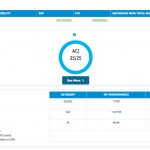Implementation of the Medicare Access and Chip Reauthorization Act of 2015 (MACRA) began Jan. 1. What does this mean for rheumatologists? It means you must pick the measures by which you will be evaluated and the pace at which you will begin reporting in the Merit-Based Incentive Payment System or participating in an Advanced Alternative Payment Model. [Also see “Quality Update Reporting Changes under MACRA.]”
The CMS has heavily incentivized participation in a Qualified Clinical Data Registry (QCDR), such as the Rheumatology Informatics System for Effectiveness (RISE) Registry, for reporting in MIPS. We will discuss the provider advantages to and bonuses for using RISE that some other physicians—who users will compete against—will not receive.
The MIPS Composite Score
Under MACRA, the quality of care you provide will be calculated by the MIPS Composite Score. Because this law is budget neutral, there must be winners and losers. To do this, the CMS will determine the average score of all providers; anyone above that score will receive bonuses, and anyone below will receive a penalty. The various degrees of bonuses and penalties are determined by how many standard deviations you are away from the CMS-determined average.
The MIPS Composite Score comprises four categories:
- Quality (replaces Physician Quality Reporting System [PQRS]): 50%
- Clinical Practices Improvement Activities (CPIAs) (new category): 15%
- Advancing Care Information (ACI) (replaces Meaningful Use): 25%
- Cost (replaces the Value-Based Modifier): 10%
Let’s take a closer look at each of the categories and how RISE can help improve your scores.
Quality
Because 2017 is a transition year, providers will participate in only three of the four MIPS categories, with the 10% coming from the Cost category shifting to the Quality category. But this is for only one year. Under MIPS, practices will report on six quality measures (three less than those under the old PQRS system), one of which must be an outcome measure (one less than PQRS) or a high-priority measure.
The CMS has established sets of specialty measures that providers are to pick from when reporting quality measures for MIPS. But because RISE is a QCDR, the ACR picks the measure set on which rheumatologists can report. The ACR has selected 16 measures, one of which is an outcome measure and five of which are high-priority measures. Click here to review RISE’s 2017 Quality Measures.
Clinical Practice Improvement Activities
CPIAs, a new category created under MIPS, comprise 90 activities. Practices need to obtain 40 points, with the activities weighted differently. Under CPIA, activities are weighted as medium (10 points) or high (20 points). Providers will have to attest that they have completed these activities for a minimum of 90 days.


